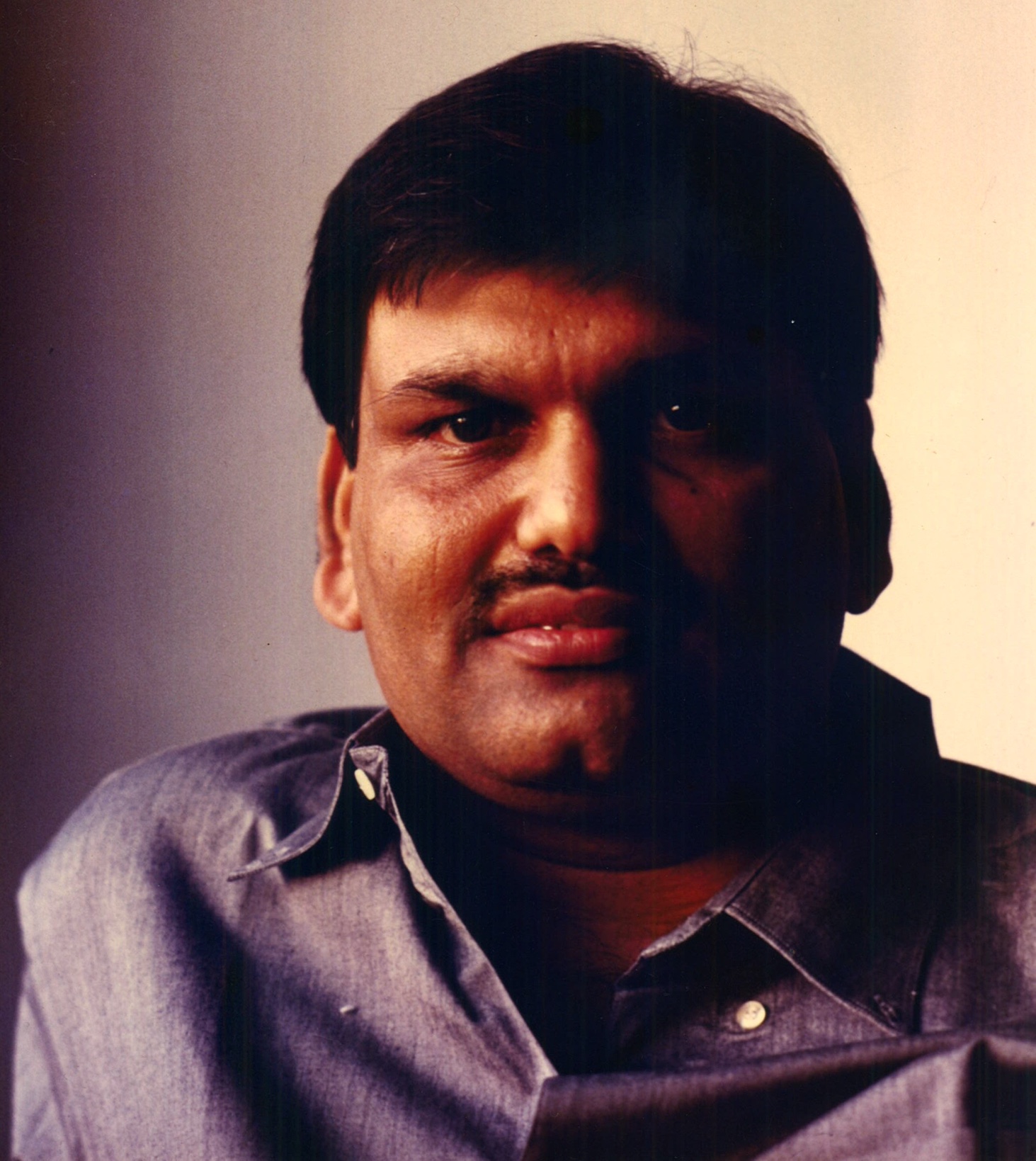Harshad Mehta Biography, Wikipedia, Wife, Children, Scam, Net Worth, Death
Harshad Mehta is a prominent figure in Indian stock market history, notorious for his role in the 1990s Harshad Mehta Scam, one of India’s biggest financial scandals. His dramatic rise and fall have inspired numerous books, documentaries, and series. Born into a middle-class family in Mumbai, his story remains complex and widely discussed.
Profile
| Category | Details |
|---|---|
| Full Name | Harshad Shantilal Mehta |
| Birth Date | 29 July 1954 |
| Birth Place | Paneli Moti, Rajkot district, Gujarat, India |
| Death Date | 31 December 2001 |
| Death Place | Thane, Maharashtra, India |
| Occupation | Stockbroker |
| Nickname | “The Big Bull of Dalal Street” |
| Education | B.Com from Lala Lajpatrai College, Mumbai |
| Career Start | Began in sales; later joined stockbroking |
| Major Achievement | Drove a historic stock market boom in early 1990s |
| Major Scandal | 1992 Indian stock market scam (~₹4,000 crores) |
| Arrest | Arrested in 1992; multiple cases filed |
| Sentence | Convicted in several cases; legal battles ongoing till death |
| Death Reason | Heart attack while in custody |
| Family | Wife: Jyoti Mehta; Son: Atur Mehta |
| Legacy | Subject of books, documentaries, and series like Scam 1992 |
Early Life and Education
Harshad Shantilal Mehta was born on July 29, 1954, in Paneli Moti, Rajkot district, Gujarat, India, into a Gujarati Jain family. His father, Shantilal Mehta, was a small-time textile businessman, and his mother, Rasilaben Mehta, was a homemaker. Harshad spent his early childhood in Borivali, Mumbai, before the family moved to Raipur, Chhattisgarh, where he attended Holy Cross Byron Bazar Higher Secondary School. Showing no exceptional academic promise, Harshad was a cricket enthusiast with a modest upbringing. After completing his schooling, he returned to Mumbai and graduated with a Bachelor of Commerce (B.Com) from Lala Lajpatrai College in 1976.

Harshad Mehta Early Career
Post-graduation, Harshad worked various odd jobs for eight years, including selling hosiery, cement, and sorting diamonds. He began his professional journey as a salesperson at the New India Assurance Company Limited (NIACL) in Mumbai. During this time, his interest in the stock market grew, leading him to resign from NIACL in 1981 to join a brokerage firm, Harjivandas Nemidas Securities, under broker Prasann Pranjivandas, whom he considered his mentor. Harshad started as a jobber, connecting clients to brokers, and quickly learned the intricacies of the stock market. By 1984, he became a licensed broker at the Bombay Stock Exchange (BSE).
Rise to Prominence
In 1986, Harshad founded Grow More Research and Asset Management, a stockbroking firm that catapulted him to fame. His aggressive trading strategies and ability to predict market trends earned him the nickname “Big Bull” of Dalal Street. By the late 1980s, he was trading heavily in blue-chip stocks like Associated Cement Company (ACC), driving its share price from ₹200 to nearly ₹9,000. Harshad justified this surge using his “replacement cost theory,” claiming the stock was undervalued relative to the cost of building a similar enterprise. His firm attracted high-profile clients, and he became a media darling, often compared to Amitabh Bachchan for his charisma and market influence. At his peak, his net worth was estimated at $475 million (approximately ₹3,542 crores in 1992).
The 1992 Securities Scam
Harshad Mehta orchestrated the infamous 1992 Indian securities scam, one of the largest financial frauds in Indian history, valued at ₹4,000 crores (equivalent to ₹24,000 crores today). The scam exploited loopholes in the banking system’s “ready forward” (RF) deals, short-term lending arrangements between banks involving government securities. Harshad acted as an intermediary, convincing banks to issue bank receipts (BRs) in his name, which he used to siphon funds into the stock market. These funds were invested in select stocks, artificially inflating their prices and creating a bull run.
Key elements of the scam included:
Fake Bank Receipts: Harshad used uncollateralized or fictitious BRs to secure funds, which were not backed by actual securities.
Stock Manipulation: He pumped money into stocks like ACC, Apollo Tyres, and Videocon, driving their prices to unsustainable levels.
Bank Involvement: Major banks, including the State Bank of India (SBI) and National Housing Bank (NHB), were implicated due to lax oversight.
The scam unraveled on April 23, 1992, when journalist Sucheta Dalal published an exposé in The Times of India, revealing Harshad’s illegal methods. The State Bank of India reported a shortfall in securities, triggering investigations. The stock market crashed, with the Sensex plummeting from 4,500 to 2,500 points, wiping out ₹1 lakh crore in investor wealth. The scandal exposed systemic flaws in India’s banking and stock market regulations.
Harshad Mehta Arrest and Legal Battles
Harshad was arrested by the Central Bureau of Investigation (CBI) on June 4, 1992, along with his brothers Ashwin and Sudhir. He faced 72 criminal charges and over 600 civil suits. The Securities and Exchange Board of India (SEBI) banned him from trading. Represented by renowned lawyer Ram Jethmalani, Harshad was granted bail after three months but was rearrested in 1997. In 1999, he was convicted in the ₹380.97 million Maruti Udyog Ltd fraud case and sentenced to five years in prison. Of the 27 criminal charges, he was convicted in only four before his death.
In a controversial 1993 press conference, Harshad alleged he paid ₹1 crore as a bribe to then-Prime Minister Narasimha Rao to secure leniency, a claim dismissed by the Indian National Congress with no evidence found. The Janakiraman Committee, formed by the Reserve Bank of India (RBI), estimated the scam’s value at ₹4,025 crores. Harshad’s actions led to SEBI introducing stricter regulations and banks tightening financial controls.
Harshad Mehta Wife and Children
Harshad was married to Jyoti Mehta, who supported him throughout his career and the subsequent legal battles. They had one son, Aatur (also spelled Atur) Mehta. Harshad lived with his joint family, including his mother Rasilaben, brothers Ashwin, Sudhir, and Hitesh, and their families, in a luxurious 15,000-square-foot penthouse in Worli, Mumbai. The property, comprising eight interconnected apartments in Madhuli Society, featured amenities like a private swimming pool, mini-theater, and billiards room. Harshad’s lavish lifestyle included a fleet of 15–20 luxury cars, such as a Lexus LS 400, Toyota Corolla, and Mercedes Benz W126.
After Harshad’s death, his family faced significant challenges. Jyoti and Aatur, now settled in the United States, fought to reclaim seized assets. Jyoti won a notable case in 2018 against stockbroker Kishore Janani and Federal Bank, securing ₹6 crores with 18% interest, totaling ₹524 crores. Rasilaben passed away in 2020 at 84, still entangled in unresolved legal battles. Ashwin Mehta, a key figure in the scam, pursued a law degree in his 50s and now practices in the Bombay High Court and Supreme Court, handling family cases and paying ₹1,700 crores to banks to clear Harshad’s name.

Harshad Mehta Net Worth and Properties
At his peak, Harshad’s net worth was around $475 million, amassed through market manipulation and illegal fund diversions. His assets included the Worli penthouse, two apartments in Juhu, and a fleet of luxury vehicles. Following his arrest, most assets were seized by authorities, and the Worli property was auctioned in 2009 for ₹32.6 crores to stockbroker Ashok Samani. Despite legal recoveries, the family’s wealth was significantly diminished due to the scam’s fallout and ongoing litigation.
Harshad Mehta Death
On December 31, 2001, Harshad Mehta died of a heart attack at age 47 while in custody at Thane Civil Hospital, after 54 days in Thane Jail. His wife, Jyoti, alleged medical negligence, claiming jail authorities ignored his complaints for four hours after his first heart attack. His sudden death led to the abatement of most criminal cases, as guilt could not be proven posthumously, though civil suits against his family persisted.
READ ALSO: Jagrati Shukla Biography: Age, Husband, Marriage, Net Worth
FAQs
Who was Harshad Mehta?
Harshad Shantilal Mehta (born July 29, 1954, in Paneli Moti, Rajkot, Gujarat) was an Indian stockbroker and businessman known for orchestrating the 1992 Indian securities scam, one of the largest financial frauds in India’s history. Nicknamed the “Big Bull” of Dalal Street, he manipulated the Bombay Stock Exchange (BSE) and amassed significant wealth before his downfall. He died on December 31, 2001, in Thane, Maharashtra.
What was Harshad Mehta’s early life like?
Born into a Gujarati Jain family, Mehta grew up in Mumbai’s Kandivali, where his father, Shantilal, ran a small textile business. The family faced financial struggles, moving to Raipur, Chhattisgarh, where Mehta completed his schooling. He later returned to Mumbai, earning a B.Com degree from Lala Lajpatrai College in 1976. Before entering the stock market, he worked odd jobs, including selling hosiery, cement, and sorting diamonds, and was employed as a salesperson at New India Assurance Company Limited (NIACL).
How did Harshad Mehta enter the stock market?
Mehta’s interest in the stock market sparked while working at NIACL. In 1981, he quit to work as a jobber for a brokerage firm under broker Prasann Pranjivandas, whom he considered his mentor. By 1984, he became a member of the BSE and founded his own firm, GrowMore Research and Asset Management, in 1986. His aggressive trading strategies earned him prominence by 1990.
What was the 1992 Harshad Mehta scam?
The 1992 securities scam involved Mehta exploiting banking system loopholes to siphon off approximately ₹4,000 crore (equivalent to over ₹24,000 crore today) using fake bank receipts (BRs) in “ready forward” deals. He funneled this money into the stock market, artificially inflating stock prices, particularly of companies like Associated Cement Company (ACC). The scam caused a market crash when exposed, wiping out significant investor wealth.






